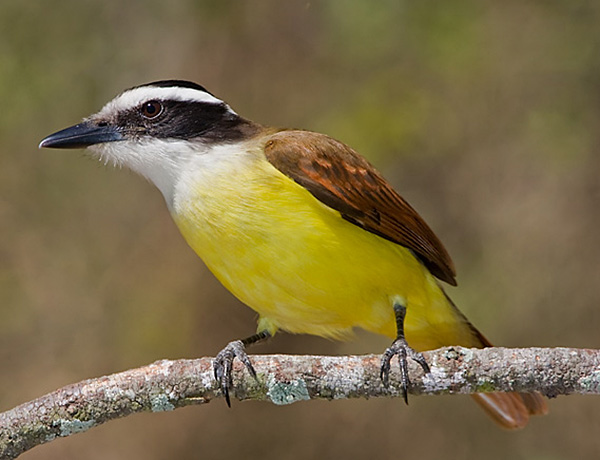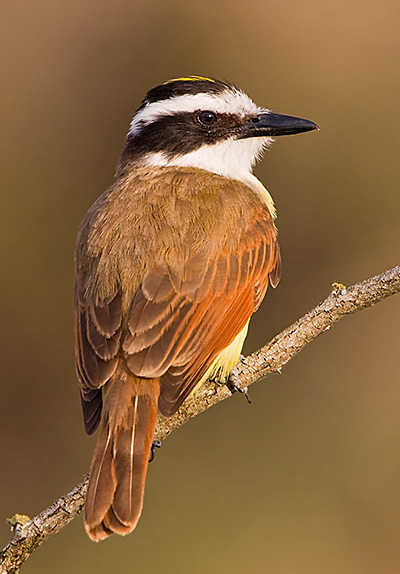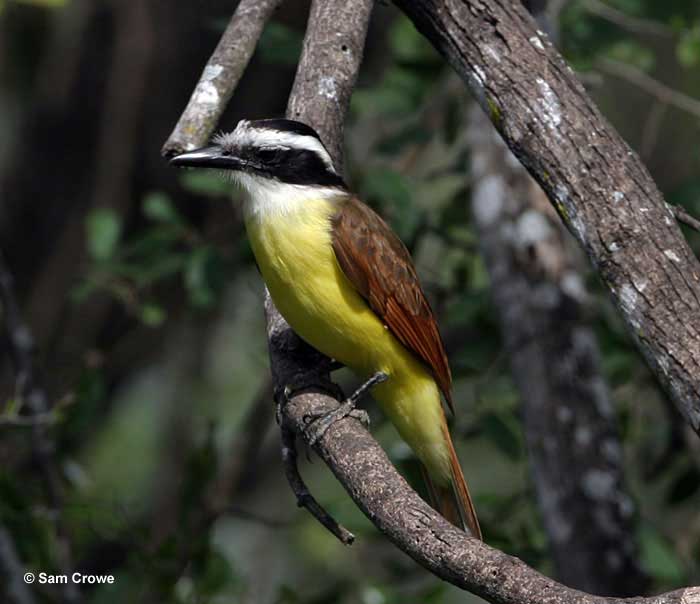The Great Kiskadee is a stocky flycatcher with reddish-brown upperparts, wings and tail. It has a white throat and bright yellow underparts, and a black and white striped head with a yellow crown patch.
On this page
Description of the Great Kiskadee
BREEDING MALE
The Great Kiskadee is a stocky flycatcher with reddish-brown upperparts, wings and tail. It has a white throat and bright yellow underparts, and a black and white striped head with a yellow crown patch. Length: 10 in. Wingspan: 15 in.

Photograph © Glenn Bartley.
Female
Sexes the same.
Seasonal change in appearance
None.
Juvenile
Similar to adults.
Habitat
Woodlands near water, and towns.
Diet
Insects, small lizards, frogs, baby birds, berries.

Photograph © Glenn Bartley.
Behavior
Forages by flycatching, or by plunging into water from a perch, or from within tree branches.
Range
Resident from south Texas south to South America.
Fun Facts
In terms of foraging behavior and diet, Great Kiskadees resemble shrikes, jays, or kingfishers more than flycatchers.
Fearless in nest defense, Great Kiskadees will even harass snakes and large raptors.
Vocalizations
A slow “kis-ka-dee” is given, and is the source of its name.
Attracting
Great Kiskadees will come to feeders for dog food, bread, or bananas.
Similar Species
- Unique appearance and sound. The similar Social Flycatcher is found in Mexico.
Nesting
The nest is a bulky mass of weeds, moss, and plant fibers with a side entrance and is placed in a large tree.
Number: 4.
Color: White.
Incubation and fledging:
– Young hatch at 15-17 days.
– Young fledge (leave the nest) 15-20 days after hatching but remain with the adults for some time.
Bent Life History of the Great Kiskadee
Bent Life History for Great Kiskadee is not available.


